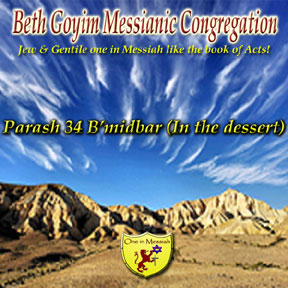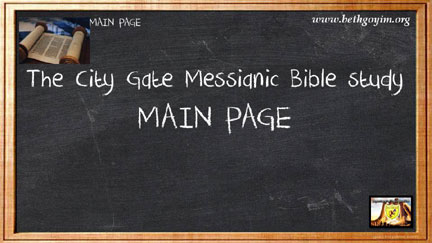


800 West 3rd Ave. Lexington, NC 27292 (973) 338-7800

B'midbar/Numbers
1:1–4:20
The name of the Parshah, "Bamidbar," means "In the desert" and it is
found in Numbers 1:1.
In the Sinai Desert, G‑d says to conduct a census of the twelve tribes
of Israel. Moses counts 603,550 men of draftable age (20 to 60 years);
the tribe of Levi, numbering 22,300 males age one month and older, is
counted separately. The Levites are to serve in the Sanctuary. They
replace the firstborn, whose number they approximated, since they were
disqualified when they participated in the worshipping of the Golden
Calf. The 273 firstborn who lacked a Levite to replace them had to pay a
five-shekel “ransom” to redeem themselves.
When the people broke camp, the three Levite clans dismantled and
transported the Sanctuary, and reassembled it at the center of the next
encampment. They then erected their own tents around it: the Kohathites,
who carried the Sanctuary’s vessels (the Ark, menorah, etc.) in their
specially designed coverings on their shoulders, camped to its south;
the Gershonites, in charge of its tapestries and roof coverings, to its
west; and the families of Merari, who transported its wall panels and
pillars, to its north. Before the Sanctuary’s entranceway, to its east,
were the tents of Moses, Aaron, and Aaron’s sons.
Beyond the Levite circle, the twelve tribes camped in four groups of
three tribes each. To the east were Judah (pop. 74,600), Issachar
(54,400) and Zebulun (57,400); to the south, Reuben (46,500), Simeon
(59,300) and Gad (45,650); to the west, Ephraim (40,500), Manasseh
(32,200) and Benjamin (35,400); and to the north, Dan (62,700), Asher
(41,500) and Naphtali (53,400). This formation was kept also while
traveling. Each tribe had its own nassi (prince or leader), and its own
flag with its tribal color and emblem.

Always remember Yeshua the Messiah is the same yesterday, today and forever.
He is and always will be a Jew.
Shabbat "The Lord's day-Sat", Bible Study (Tuesday)
SHABBAT "Saturday" at 11 AM - Bible Study Tuesday night 7:30-9:00PM EST





